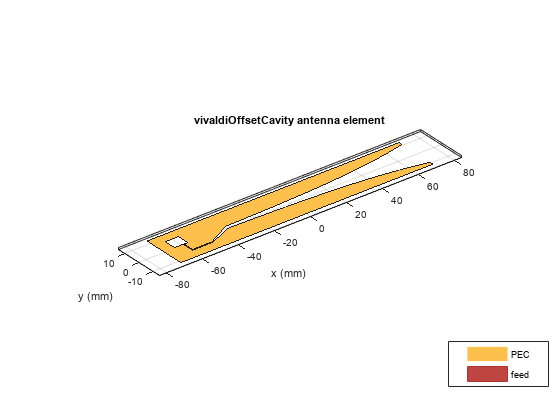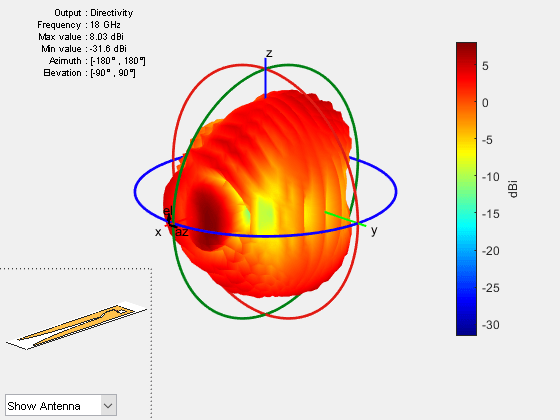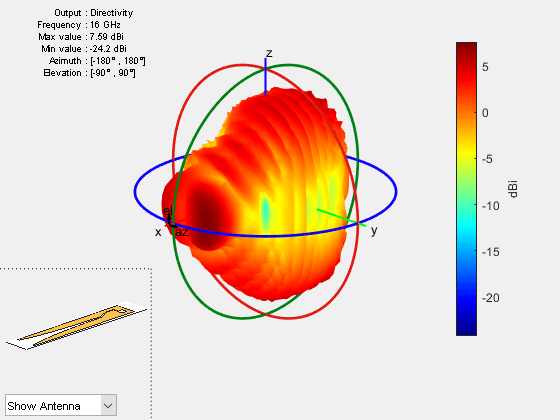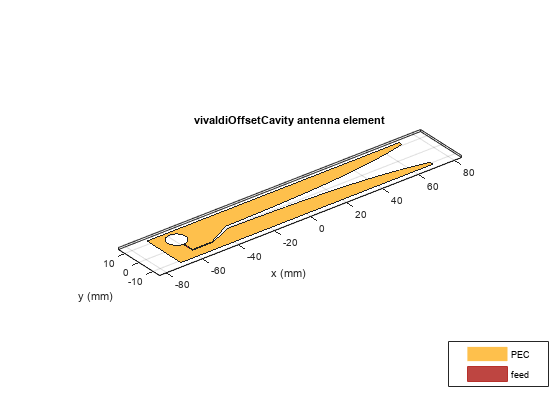vivaldiOffsetCavity
Description
The default vivaldiOffsetCavity object creates a Vivaldi antenna with a
rectangular or circular offset cavity on an exponential or linear taper ground plane
resonating around 16 GHz. The Vivaldi offset cavity antenna has a metal structure which helps
the antenna avoid the shortcomings of an antipodal Vivaldi antenna like large microstrip loss,
complex installation, and integration. The wideband characteristics of a Vivaldi offset cavity
antenna make it suitable for ultra-wideband phased array applications used in aviation and
aerospace technologies.
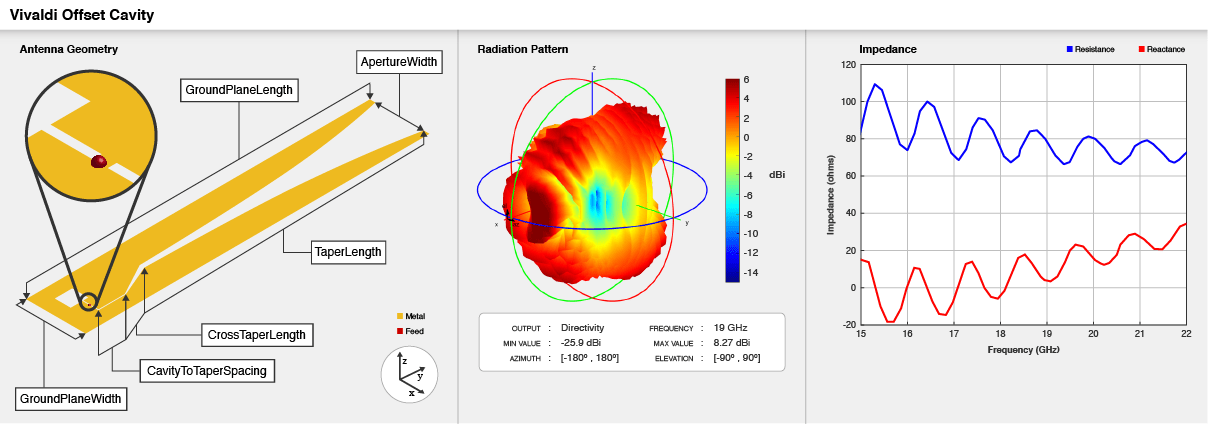
Creation
Description
vi = vivaldiOffsetCavity
vi = vivaldiOffsetCavity(PropertyName=Value)PropertyName is the property
name and Value is the corresponding value. You can specify several
name-value arguments in any order as
PropertyName1=Value1,...,PropertyNameN=ValueN. Properties that you
do not specify, retain their default values.
For example, ant = vivaldiOffsetCavity(CavityShape="Circular")
creates a Vivaldi antenna with a circular offset cavity.
Properties
Object Functions
axialRatio | Calculate and plot axial ratio of antenna or array |
bandwidth | Calculate and plot absolute bandwidth of antenna or array |
beamwidth | Beamwidth of antenna |
charge | Charge distribution on antenna or array surface |
current | Current distribution on antenna or array surface |
design | Create antenna, array, or AI-based antenna resonating at specified frequency |
efficiency | Calculate and plot radiation efficiency of antenna or array |
EHfields | Electric and magnetic fields of antennas or embedded electric and magnetic fields of antenna element in arrays |
feedCurrent | Calculate current at feed for antenna or array |
impedance | Calculate and plot input impedance of antenna or scan impedance of array |
info | Display information about antenna, array, or platform |
memoryEstimate | Estimate memory required to solve antenna or array mesh |
mesh | Generate and view mesh for antennas, arrays, and custom shapes |
meshconfig | Change meshing mode of antenna, array, custom antenna, custom array, or custom geometry |
msiwrite | Write antenna or array analysis data to MSI planet file |
optimize | Optimize antenna and array catalog elements using SADEA or TR-SADEA algorithm |
pattern | Plot radiation pattern of antenna, array, or embedded element of array |
patternAzimuth | Azimuth plane radiation pattern of antenna or array |
patternElevation | Elevation plane radiation pattern of antenna or array |
peakRadiation | Calculate and mark maximum radiation points of antenna or array on radiation pattern |
rcs | Calculate and plot monostatic and bistatic radar cross section (RCS) of platform, antenna, or array |
resonantFrequency | Calculate and plot resonant frequency of antenna |
returnLoss | Calculate and plot return loss of antenna or scan return loss of array |
show | Display antenna, array structures, shapes, or platform |
sparameters | Calculate S-parameters for antenna or array |
stlwrite | Write mesh information to STL file |
vswr | Calculate and plot voltage standing wave ratio (VSWR) of antenna or array element |
Examples
References
[1] X. Ma, S. Chai, K. Xiao and L. Ding. "Design of All-Metal Vivaldi Phased Array Antenna," IEEE 3rd International Conference on Signal and Image Processing (ICSIP), 2018, pp. 547-551, doi: 10.1109/SIPROCESS.2018.8600487.
[2] C. L. Prasanna, M. Bhagya Lakshmi, and N. N. Sastry. "A Parametric Analysis & Design of All Metal Vivaldi Antenna Covering 3.0-18 GHz for DF and Phased Array Applications," Progress In Electromagnetics Research C, vol. 92 (April 2019): pp. 57-69. doi:10.2528/PIERC19020601
Version History
Introduced in R2021a
